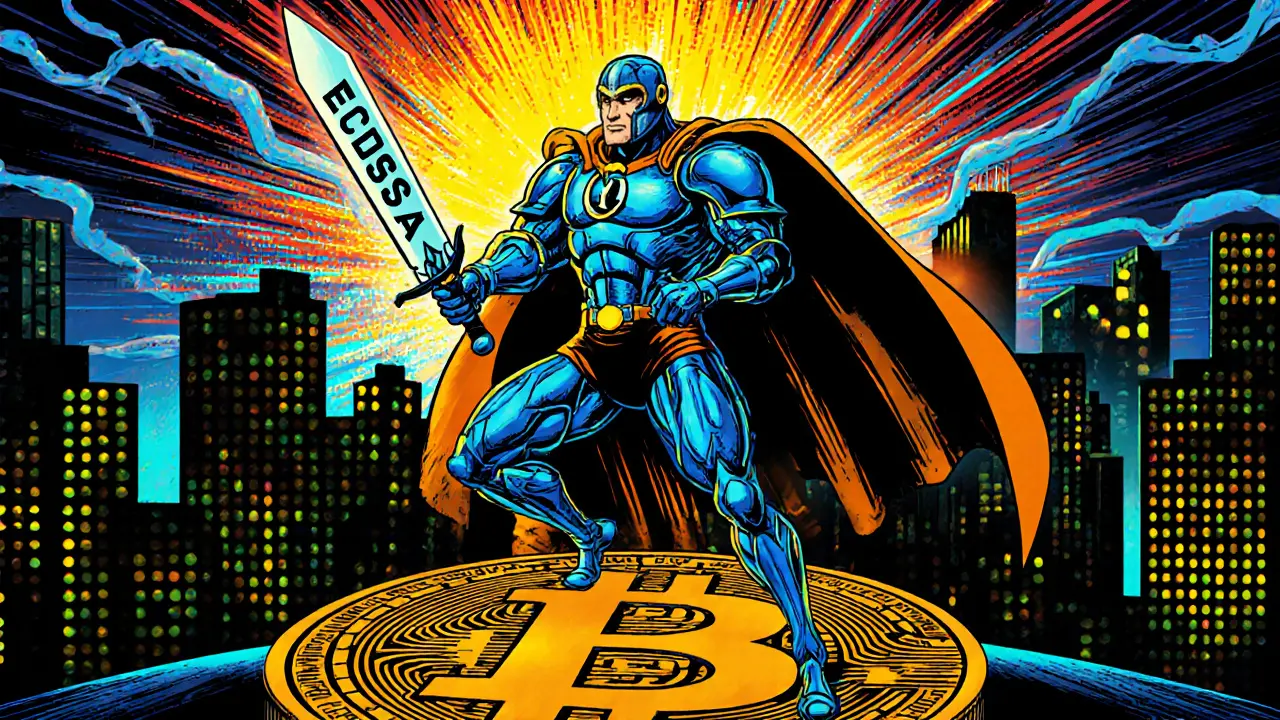ECDSA: The Core of Crypto Signatures
When working with ECDSA, Elliptic Curve Digital Signature Algorithm, a method that creates and verifies cryptographic signatures using elliptic curves, also known as Elliptic Curve Signature, it powers the trust model of most modern blockchains. Elliptic Curve Cryptography, a family of algorithms that rely on the mathematics of elliptic curves to provide asymmetric encryption supplies the hard math behind the signatures. Digital Signatures, cryptographic proofs that a specific private key signed a piece of data built on ECDSA let anyone verify authenticity without exposing secret keys. Finally, Blockchain, a distributed ledger where each block links to the previous one via cryptographic hashes depends on these signatures to stop fraud and keep consensus honest. In practice, ECDSA works by turning a message into a fixed‑size hash, picking a random nonce, and calculating two numbers (r and s) that together form the signature. The verifier runs a short equation using the sender’s public key, the hash, and the r‑s pair; if everything lines up, the transaction is accepted. This flow—hash, nonce, r, s, verify—creates a tight loop that makes forging signatures practically impossible, which is why the whole ecosystem leans on it.
Key Attributes, Security Trade‑offs, and Real‑World Values
Key attributes of ECDSA include the curve choice, key length, and the hash algorithm used before signing. Most Bitcoin‑derived chains pick the secp256k1 curve because it offers a 256‑bit security level with relatively small keys – that means a 32‑byte private key and a 33‑byte compressed public key. The algorithm’s signature size is fixed at 64 bytes, making it efficient for storage on a blockchain where every byte costs gas. For hashing, SHA‑256 is the de‑facto standard; it condenses any message into a 256‑bit digest that the signing routine then processes. These values keep verification fast: a node can check a signature in a few microseconds, which is why high‑throughput networks like Ethereum still rely on ECDSA despite newer alternatives. However, ECDSA isn’t without risks. Re‑using the nonce (the random number used in each signature) can leak the private key, a flaw that has been exploited in real attacks on poorly implemented wallets. Side‑channel attacks targeting hardware devices can also extract keys if proper countermeasures aren’t in place. Choosing secure curve parameters and generating high‑entropy nonces are therefore mandatory steps for developers and hardware manufacturers.
Because ECDSA sits at the intersection of cryptography and distributed systems, it shows up everywhere from wallet software to smart‑contract platforms and hardware security modules. When you create a new Bitcoin wallet, the first step is generating an ECDSA key pair and storing the private key safely; the same process underlies Binance Smart Chain, many DeFi protocols, and even cross‑chain bridges that need to prove ownership of assets on different ledgers. Developers who need faster signatures sometimes explore Ed25519 or BLS, but the ecosystem’s tooling around ECDSA remains unmatched, with open‑source libraries in virtually every programming language, browser extensions, and dedicated hardware wallets that isolate the signing process. In the coming years, proposals like Ethereum’s EIP‑1559 and upcoming post‑quantum research will keep the conversation around signature schemes lively, but today ECDSA remains the workhorse that keeps crypto honest. Below you’ll find a hand‑picked mix of articles that break down mining difficulty, airdrop safety, VPN risks, and more – all tied together by the underlying security that ECDSA provides to keep crypto honest.

Schnorr Signatures vs ECDSA in Bitcoin: What Changed After Taproot
Schnorr signatures replaced ECDSA as Bitcoin's preferred signature scheme after Taproot. They're smaller, faster, private, and enable key aggregation - making multisig transactions look like regular ones.
November 18 2025
Understanding Digital Signature Algorithms in Blockchain
Explore the main digital signature algorithms behind blockchain-ECDSA, EdDSA, Schnorr and BLS. Learn how they work, compare security and performance, and discover which is best for your project.
December 14 2024